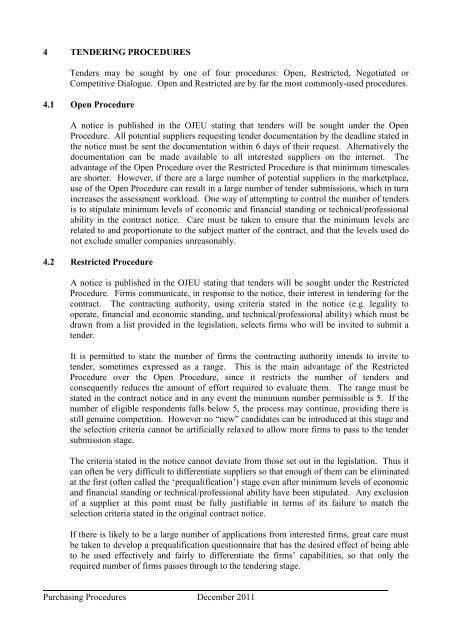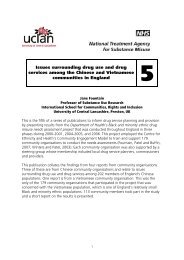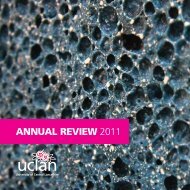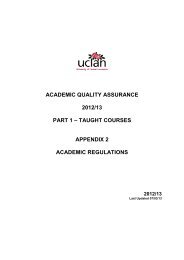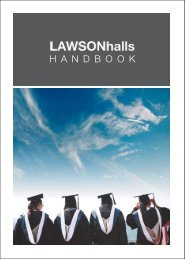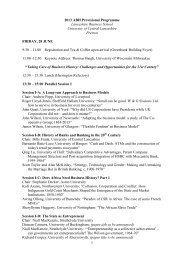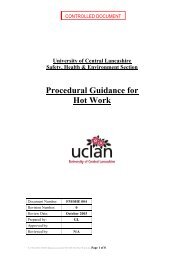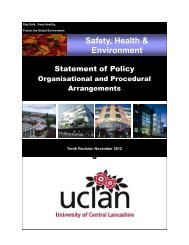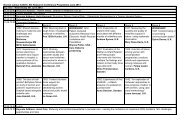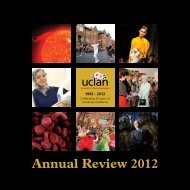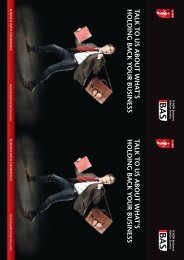PURCHASING PROCEDURES - University of Central Lancashire
PURCHASING PROCEDURES - University of Central Lancashire
PURCHASING PROCEDURES - University of Central Lancashire
You also want an ePaper? Increase the reach of your titles
YUMPU automatically turns print PDFs into web optimized ePapers that Google loves.
4 TENDERING <strong>PROCEDURES</strong><br />
Tenders may be sought by one <strong>of</strong> four procedures: Open, Restricted, Negotiated or<br />
Competitive Dialogue. Open and Restricted are by far the most commonly-used procedures.<br />
4.1 Open Procedure<br />
A notice is published in the OJEU stating that tenders will be sought under the Open<br />
Procedure. All potential suppliers requesting tender documentation by the deadline stated in<br />
the notice must be sent the documentation within 6 days <strong>of</strong> their request. Alternatively the<br />
documentation can be made available to all interested suppliers on the internet. The<br />
advantage <strong>of</strong> the Open Procedure over the Restricted Procedure is that minimum timescales<br />
are shorter. However, if there are a large number <strong>of</strong> potential suppliers in the marketplace,<br />
use <strong>of</strong> the Open Procedure can result in a large number <strong>of</strong> tender submissions, which in turn<br />
increases the assessment workload. One way <strong>of</strong> attempting to control the number <strong>of</strong> tenders<br />
is to stipulate minimum levels <strong>of</strong> economic and financial standing or technical/pr<strong>of</strong>essional<br />
ability in the contract notice. Care must be taken to ensure that the minimum levels are<br />
related to and proportionate to the subject matter <strong>of</strong> the contract, and that the levels used do<br />
not exclude smaller companies unreasonably.<br />
4.2 Restricted Procedure<br />
A notice is published in the OJEU stating that tenders will be sought under the Restricted<br />
Procedure. Firms communicate, in response to the notice, their interest in tendering for the<br />
contract. The contracting authority, using criteria stated in the notice (e.g. legality to<br />
operate, financial and economic standing, and technical/pr<strong>of</strong>essional ability) which must be<br />
drawn from a list provided in the legislation, selects firms who will be invited to submit a<br />
tender.<br />
It is permitted to state the number <strong>of</strong> firms the contracting authority intends to invite to<br />
tender, sometimes expressed as a range. This is the main advantage <strong>of</strong> the Restricted<br />
Procedure over the Open Procedure, since it restricts the number <strong>of</strong> tenders and<br />
consequently reduces the amount <strong>of</strong> effort required to evaluate them. The range must be<br />
stated in the contract notice and in any event the minimum number permissible is 5. If the<br />
number <strong>of</strong> eligible respondents falls below 5, the process may continue, providing there is<br />
still genuine competition. However no “new” candidates can be introduced at this stage and<br />
the selection criteria cannot be artificially relaxed to allow more firms to pass to the tender<br />
submission stage.<br />
The criteria stated in the notice cannot deviate from those set out in the legislation. Thus it<br />
can <strong>of</strong>ten be very difficult to differentiate suppliers so that enough <strong>of</strong> them can be eliminated<br />
at the first (<strong>of</strong>ten called the „prequalification‟) stage even after minimum levels <strong>of</strong> economic<br />
and financial standing or technical/pr<strong>of</strong>essional ability have been stipulated. Any exclusion<br />
<strong>of</strong> a supplier at this point must be fully justifiable in terms <strong>of</strong> its failure to match the<br />
selection criteria stated in the original contract notice.<br />
If there is likely to be a large number <strong>of</strong> applications from interested firms, great care must<br />
be taken to develop a prequalification questionnaire that has the desired effect <strong>of</strong> being able<br />
to be used effectively and fairly to differentiate the firms‟ capabilities, so that only the<br />
required number <strong>of</strong> firms passes through to the tendering stage.<br />
Purchasing Procedures December 2011


